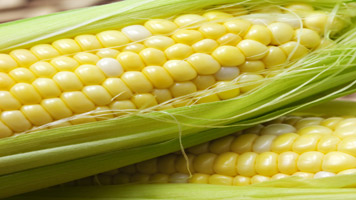Drought impact grows on crops, USDA says
Category: Grains, Miscellaneous
 (AG Week) – Drought is taking a growing toll on Upper Midwest crops, especially in Montana, a new U.S. Department of Agriculture report says.
(AG Week) – Drought is taking a growing toll on Upper Midwest crops, especially in Montana, a new U.S. Department of Agriculture report says.
The weekly crop progress report, released Wednesday afternoon by the National Agricultural Statistics Service, an arm of USDA, found that overall crop and pasture conditions continue to deteriorate.
The weekly report, normally released on Mondays, came out later this week because of the July Fourth holiday. It reflects crop conditions on July 2.
Montana experienced significant declines in the condition of most of the crops grown there, according to the report.
Corn provides a good example of the overall decline, though Montana doesn’t grow enough of it to be included in the weekly report’s corn category.
In South Dakota, 22 percent of the corn crop was in poor or very condition on July 2, compared with 20 percent a week earlier.
Sixteen percent of North Dakota corn was rated poor or very poor on July 2, compared with 13 percent a week earlier.
Minnesota’s corn crop showed small improvement, however. Three percent rated poor or very poor on July 2, compared with 4 percent a week earlier.
Range and pasture continued to decline, too.
In North Dakota, 62 percent of range and pasture was in poor or very condition on July 2, compared with 61 percent a week earlier.
South Dakota pasture and range was rated 57 percent poor or very poor on July 2, compared with 53 percent a week earlier.
In Montana, 42 percent of pasture and range was in poor or very poor shape, a large decline from 26 percent a week earlier.
Minnesota pasture and range rated 6 percent poor or very poor compared with 4 percent a week earlier.
Conditions for other crops raised in the Upper Midwest, including oats, barley, sorghum and winter wheat, also declined overall, according to the latest report
Here what’s the report found for wheat and soybeans, which, along with corn, are the nation’s three major crops.
Spring wheat
South Dakota — Sixty-five percent was in poor or very poor shape on July 2, compared with 62 percent a week earlier.
Montana — Fifty-one percent rated poor or very poor on July 2, compared with 36 percent a week earlier.
North Dakota — Thirty percent was in poor or very poor condition on July 2, compared with 27 percent a week earlier.
Minnesota — One percent was in poor or very poor shape on July 2, compared with 0 percent a week earlier. Most of the state’s spring wheat is grown in northwest Minnesota, which generally has avoided drought.
Soybeans
South Dakota — Twenty-three rated poor or very poor on July 2, compared with 21 percent a week earlier.
North Dakota — Seventeen percent was in poor or very condition on July 2, compared with 16 percent a week earlier.
Minnesota — Five percent rated poor or very poor on July 2, compared with 4 percent a week earlier.




